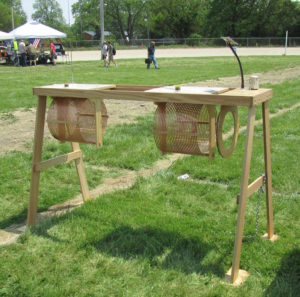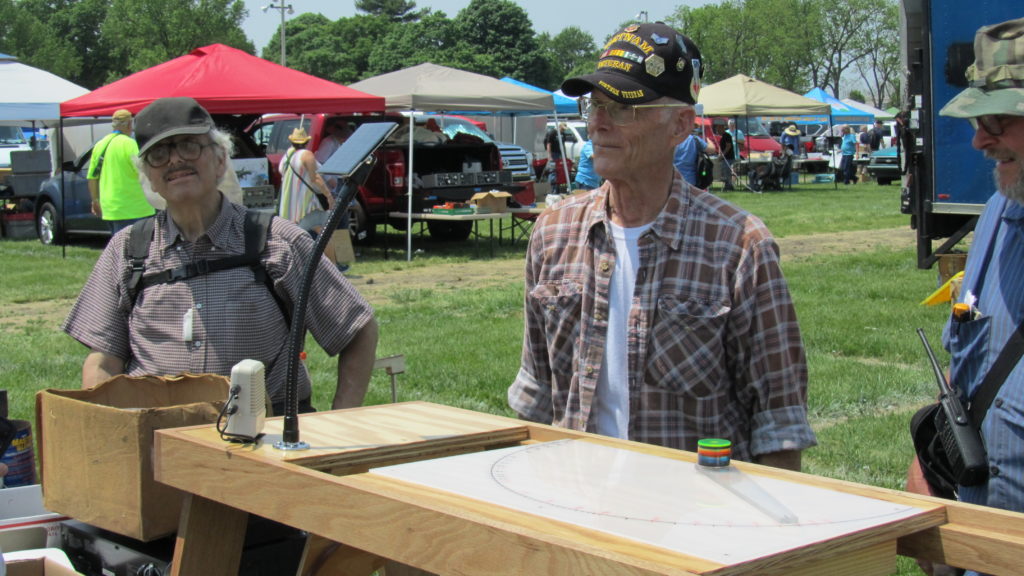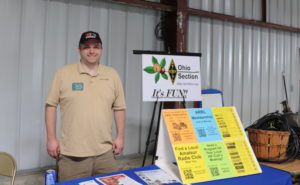One of the responsibilities of the Technical Coordinator in the Ohio Section is to submit something for the Section Journal. The Section Journal covers Amateur Radio related things happening in and around the ARRL Ohio Section. It is published by the Section Manager Tom – WB8LCD and articles are submitted by cabinet members.
Once my article is published in the Journal, I will also make it available on my site with a link to the published edition.
You can receive the Journal and other Ohio Section news by joining the mailing list Tom has setup. You do not need to be a member of the ARRL, Ohio Section, or even a ham to join the mailing list. Please sign up!
If you are an ARRL member and reside in the Ohio Section, update your mailing preferences to receive Ohio Section news in your inbox. Those residing outside the Ohio section will need to use the mailing list link above. Updating your ARRL profile will deliver news from the section where you reside (if the leadership chooses to use this method).
- Go to www.arrl.org and click the Login button.
- Login
- When logged in successfully, it will say “Hello <Name>” in place of the Login button where <Name> is your name. Click your Name. This will take you to the “My Account” page.
- On the left hand side, under the “Communication” heading (second from the bottom), click Opt In/Out
- To the right of the “Opt In/Out” heading, click Edit
- Check the box next to “Division and Section News.” If it is already checked, you are already receiving the Ohio Section Journal.
- Click Save
- There should now be a green check mark next to “Division and Section News.” You’re all set!
Now without further ado…
Read the full edition at:
THE TECHNICAL COORDINATOR
Jeff Kopcak – TC
k8jtk@arrl.net
Another Hamvention has come and gone. Unfortunately, my dad, N8ETP, didn’t make it as he is recovering from a medical procedure from earlier this year. I was flying solo again. As most of the OSJ readers are in Ohio, Dayton is a few-hour drive for most of us. It’s almost exactly 3 hours from my QTH to the hotel.
After dinner Thursday night, I went searching for digital repeaters – NXDN and P25 in particular. RepeaterBook didn’t have NXDN repeaters in the Dayton area. Guess I didn’t need to bring that radio. There was a P25 repeater I found last year and could hit from my hotel. Listening to conversations, there was mention of a P25 repeater at the Xenia site but I wasn’t able to find the details for it last year. This year, I found the Miami Valley P25 Ham Radio Network website. Their site lists repeaters on the network, including the information I needed for the Xenia site.
P25 is another digital standard used mostly by public safety agencies. It’s similar to DMR in that there are 7-digit IDs, talkgroups, and zones. Instead of a color code, P25 has NAC or network access code. Like DMR, P25 was also developed for commercial use and then adopted to ham radio. The statewide MARCS system, Greater Cleveland Radio Communications Network (GCRCN), and Northwest Ohio Regional Public Safety System are all P25 systems. There aren’t many “ham friendly” P25 radio options. Most are repurposed/used commercial radios from Motorola, Harris, or EF Johnson.

According to their programming guide, Miami Valley P25 sites have been upgraded to “version 2” programming of their repeaters. This may be why the talkgroups I had from last year were completely different for the Dayton repeater.
With tower sites in Shelby, Miami, Champaign, Montgomery, Greene, and Warren counties, the “MVP25” is an interconnected network of UHF (440) P25 repeaters. Each site has backup power and each repeater can operate independently when a network link failure occurs. Sites are linked with direct network connections that presumably don’t use the internet. No cloud services of any kind are utilized. The network can only be accessed via RF. No hotspot and no MMDVM connections are possible.
Reading and programming my Motorola XTS radio for the MVP25 network, I learned more about options in the software. One example is “selective squelch” which will only unmute the radio for transmissions on the selected talkgroup. Their programming template and examples helped me understand their objective and made programming easy.
Each repeater has an “MVL” (Miami Valley Link) talkgroup which is heard on all MVP25 linked repeaters and a “STE” (site) talkgroup for conversations on the local repeater. MVL is the primary talkgroup on the repeater. Users wanting to carry on a conversation locally can override the MV talkgroup by using the STE talkgroup.

They recommended using the bank switch (A-B-C switch) for switching talkgroups on a single repeater site. In the context of my radio, Bank A = Zone 1, Bank B = Zone 2, Bank C = Zone 3. This was a neat idea because, for example, channel 5 in zone A & B would be the Xenia Hamvention repeater site. Zone A would be the programming for linked communication using the MVL talkgroup. Zone B would be the local site talkgroup for each repeater. Selecting channel 5 (Xenia) using the channel knob, then selecting bank A would be Xenia MVL talkgroup configuration, Bank B would be Xenia STE talkgroup configuration. Channel 8 would be the Dayton site. Switching to A would be the MVL talkgroup and B would be STE Dayton local.
Since my radio is front panel programming capable, Zone A was the FPP (I didn’t see a way to change this). In their programming guide, bank A became B. Bank B became bank C. Their template had the same exact “UCOM1” (UHF P25 simplex frequency) frequency for every channel in bank C. I took this to mean it’s a ‘flex’ bank in cases of radios that have a reserved bank. I didn’t lose anything because “UCOM1” was also channel 1 in the MVL and STE banks.
Previously, I had only used my P25 radio with my MMDVM hotspots. Programming multiple sites on the same network was a new experience. I learned about copying the current selected entry and export/import to make copies of zones. Kudos to the admins, designers, and those whom wrote the programming guide. It is well thought out and the guide made a lot of sense.
Friday, I hit the flea market. I wasn’t looking for too much this year – either new or used. I was in the market for a second set of Motorola CDM radios. I am using a UHF CDM for an AllStar node and I have a VHF model too. I would like to pick up a second set for spare radios. Also was looking for a second UHF XTS and a new to me VHF. No one was giving them away.

In the “coolest thing I’ve ever seen at a hamfest” category was the life-sized crystal set someone built and had on display in the flea market. There were no plans, no diagrams, no anything. It was all in his head. Nothing written up. Nothing diagrammed. The only thing powered was a solar powered amplifier for received audio. If you didn’t see this thing in the flea market, you missed out. The builder didn’t have a name or call displayed unfortunately.
I wanted to hit the inside stuff on Saturday, but instead ran into George – W5JDX and Mike – VE3MIC from AmateurLogic in front of the ICOM booth. Helped them do some recording for their latest episode (which should be out by the time this is published, episode 181). Then we all hung out with Chip – K9MIT of “Chip Stick” fame from Ham Nation and Mike’s cousin (forget the call). A good time was had by all.
Didn’t spend a lot of money this year at Hamvention. Emile would approve (joke for ALTV viewers). Talking with groups and vendors got the wheels turning on some ideas – such as devices to use with my MESH node. On my way home, I stopped by the secondary hamfest called MicroCenter and spent some money there on some deals they had.
Thanks for reading and 73… de Jeff – K8JTK
